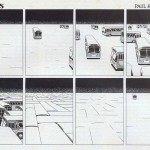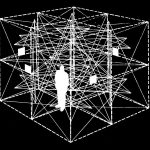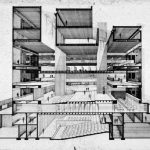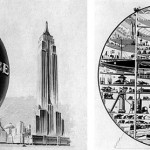Mankind is at a turning point in its history. The mass of data acquired is astounding. We need new instruments to simplify it, to condense it, or intelligence will never be able to overcome the difficulties imposed upon it or achieve the progress that it foresees and to which it aspires. Paul Otlet, Treaties on Documentation, 1934
Before the advent of information technology and of the World Wide Web, a project synthesized at once the need to concentrate all human knowledge in a single, accessible place, and the capacity of providing an efficient system to remotely and effectively retrieve all of this information. This project was the Mundaneum.
Conceived by two Belgian jurists, Paul Otlet (1868-1944), father of modern documentation and indexing techniques, and Henri La Fontaine (1854-1943), Nobel Peace Prize winner in 1910, the Mundaneum is considered as a precursor of network-based knowledge systems and of the Internet itself.

A massive center for documentation and communication, the Mundaneum aimed at hosting all human knowledge and facilitating worldwide sharing through the connection of universities, governmental institutions, and individuals. It was also meant to embody the idea of promoting peace among nations.
The information would have been classified on indexing cards under the Universal Decimal Classification, developed by Otlet, and the institutions would have merged shelves and printed documentation with screens and telephones allowing users from all over the world to ask questions. A first version of the project was indeed realized and hosted in 150 rooms of the Palais du Cinquantenaire in Mons, a location offered by the Belgian government.

Otlet had much bigger plans for the Mundaneum: a dedicated building whose architecture would be capable of reflecting the logic of the networked organization of information. Through Otlet’s multiple sketches and notes, we understand the basic parts of the project in the form of octagonal cells ready to be connected one another, including stored information linked to visual documents on each side. This choice is tied to Otlet’s long research meant to understand the ability of specific images to display complex information in a direct way.

The project would have given shape to democratic accessibility to collective memory and knowledge while materializing an exteriorized, collective mental process.
Otlet contacted several architects to give form to its final project, notably Le Corbusier, who imagined it as a ziggurat-shaped monument close to Geneve, and later the Belgian modernist architect Maurice Heymans. The latter developed three versions of a detailed project, from 1934 and 1938, in close collaboration with Otlet, introducing an analogy between his ideas on the organization of knowledge and the actual organization of the architectural space as delineated in Otlet’s sketches. From the exterior, the Mundaneum would resemble a sacred monument in the shape of a platonic pyramid. Inside, it would feature a system of rooms which would become “a modernist theatre of memory to visualize Otlet’s cosmological and epistemological order” (Wouter Van Acker).

Otlet was never able to fully implement his plans and the books and indexed cards of the Mundaneum were destroyed by Nazi forces in 1940. Today, a non-profit organization based in Mons, Belgium, runs an archive and an exhibition space to celebrate the legacy of the original Mundaneum.










Leave a Reply